New Jersey is off until Monday, so they will recall Sislo next week if none of their injured forwards are able to return to the lineup.

New Jersey is off until Monday, so they will recall Sislo next week if none of their injured forwards are able to return to the lineup.

Tyrell, 25, has five goals and four assists in seven games with Springfield this season. This is his first full season in the Blue Jackets organization after being with the Lightning since 2007-08. He has seven goals and 17 assists (24 points) in 132 career NHL games.
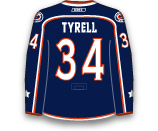
Dano, 19, tallied one goal and one assists while averaging 11:42 TOI per game in eight games with the Blue Jackets. The 27th overall pick in 2013 will be replaced by Dana Tyrell who is coming the other way.
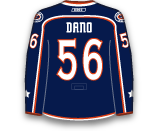
Mrazek, 22, has gone 1-2-0 with a 3.80 GAA and .854 SV% in four games with Grand Rapids this season. Mrazek was excellent in the preseason and has been solid in his brief time with the Red Wings. He is 3-5-0 with a 1.80 GAA and .926 SV% in his young NHL career. With Jonas Gustavsson out for two months, Mrazek should see a handful of starts, but the Red Wings do not have a back-to-back until December 6th and 7th, so he could be waiting awhile if the Wings decide to ride Jimmy Howard.

Jensen, 21, has scored four goals and two assists in 11 games with Utica this season. The 2011 29th overall pick has three goals and three assists in 19 career NHL games. With Zack Kassian being nagged by a lower-body injury, Jensen has been recalled and could play Saturday.
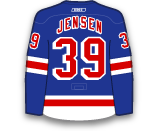
Tierney registered two assists in 11 games with the Sharks, but has been sent down to make room for Tyler Kennedy who has been activated from IR and is expected to make his season debut tonight.

Mueller scored one goal with one assist in seven games during his recall. Sending him back to the AHL means that Derek Stepan will return to the Rangers lineup on Saturday.

Regin, 28, is a versatile forward who had four points (2G / 2A) in 17 games with the Hawks last season. He will likely be with the team for a few weeks with Patrick Sharp sidelined with a leg injury. Expect him to skate on the fourth line on Friday.
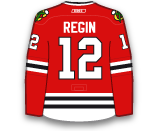
Marincin has one assist with a minus-2 rating in eight games with the Oilers this season. Despite losing Andrew Ferenece to a suspension, the Oilers are comfortable enough with Keith Aulie to send Marincin back to OKC.
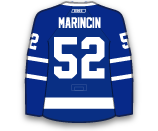
Pakarinen, 23, has five goals and three assists in his first seven games in North America with OKC (AHL). The 2011 seventh round pick (2011) will likely make his NHL debut on Thursday with Leon Draisaitl and Nail Yakupov as his line mates.

McIlrath played 8:02 and record nine penalty minutes, two hits and three blocked shots in his season debut on Monday. With Kevin Klein ready to return to the lineup tonight, McIlrath had to go back to Hartford.

Manning appeared in two games during his recall, he had one assists and averaged 11:45 TOI. He heads back to Lehigh Valley where he had a goal and four assists in six games prior to being called-up.
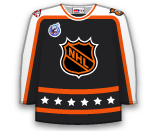
Alex Killorn was not on the ice again on Wednesday, so he seems doubtful for Thursday, which means Paquette will be reinserted into the lineup. He skated on the fourth line with Vladislav Namestnikov and Jonathan Drouin this morning.

John Gibson is expected to miss six weeks with a groin injury and Frederik Andersen is day-to-day with leg tightness, so Bobkov has been recalled as insurance for Wednesday's game against the Islanders. Bobkov has gone 0-2-0 with a 5.05 GAA and .844 SV% with Norfolk this season. He has never played in an NHL contest. Expect him to backup Jason LaBarbera tomorrow if Andersen is unavailable.
The Sharks are still waiting for Kennedy to make his season debut, but he is now one step closer. The 28-year-old tallied two goals and one assist in three games with Worcester during his conditioning stint. Look for him to play on Thursday vs. Vancouver.
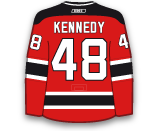
Clemmensen did not even get a chance to start for the Devils this season, but did make two relief appearances. He allowed four goals on 17 shots (.765 SV%) in those two outings, so that probably played a huge part in the decision to send the 37-year-old down.
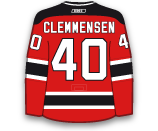
The Devils placed Scott Clemmensen on waivers on Monday, so it looks like he will be sent down, which means Kinkaid is on his way up to be Cory Schneider's backup. Kinkaid has gone 4-0-2 with a 1.95 GAA and .931 SV% in six AHL starts this season.

With Matt Calvert and Boone Jenner ready to return to the lineup tonight, the Blue Jackets had to make some roster decisions. They have sent Collins back after he played two games with them over the weekend. He had no points and a minus-1 rating.
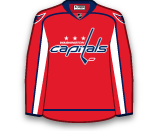
Hodgman played in four games during his recall, scoring one goal with a minus-1 rating while averaging 11:12 TOI. Brandon Gormley was the Coyotes corresponding roster move.

Gormley, 22, has one goal and two assists in six games with Portland (AHL) this season. The 2010 13th overall pick has yet to record a point in five career NHL games (all in 2013-14). With Gormley being recalled, the Coyotes sent Justin Hodgman back to Portland.
